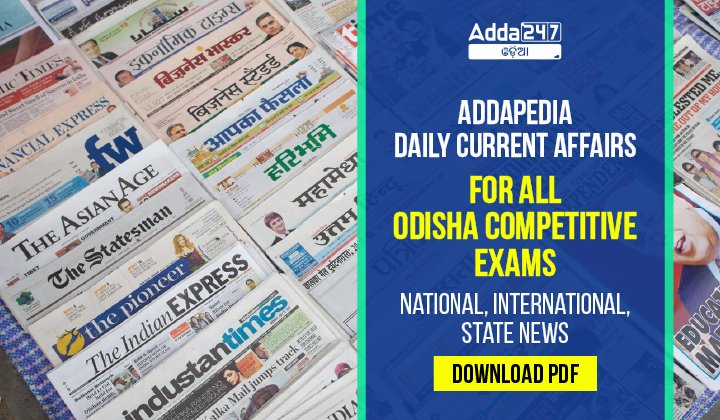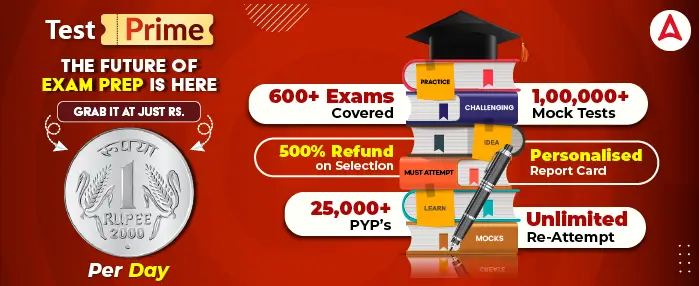As you are aware, in all competitive exams, the “Daily Current Affairs Section” holds significant importance in determining the cutoff scores. Therefore, if you excel in this section, you will have a better chance of achieving higher marks in these exams and securing a spot on the merit list.
Addapedia Odisha – Daily Current Affairs -24 August 2024
| National and International News |
| SPICED scheme |
Why in the news?
- The Spices Board of India launched the SPICED scheme to enhance spice exports, improve cardamom productivity, and upgrade post-harvest spice quality for exports.
About SPICED scheme :
- Scheme Name: “Sustainability in Spice Sector through Progressive, Innovative, and Collaborative Interventions for Export Development” (SPICED).
- Duration and Funding: The scheme will be implemented till FY 2025-26, with an approved outlay of ₹422.30 crore during the 15th Finance Commission cycle.
- Objectives:
- Value Addition and Innovation: Facilitate value-addition and drive innovation in the spice sector.
- Sustainability: Promote sustainability in the spice sector.
- Key Components:
- Mission Value Addition
- Mission Clean and Safe Spices
- Promotion of GI-tagged spices
- Support for Entrepreneurship through Spice Incubation Centres
|
| Quantum Nonlocality |
Why in the news?
- Scientists have shown that it is not possible to establish a universal standard for measuring and quantifying non-local quantum correlations.
About Quantum Nonlocality:
- Classical Physics and Locality: Classical physics assumes the principle of locality, where objects are influenced only by their immediate surroundings.
- Quantum Mechanics and Nonlocality: Quantum mechanics introduces the principle of nonlocality, where objects appear to instantaneously know about each other’s state, regardless of the distance between them.
- Contradiction with Speed of Light: Nonlocality challenges Einstein’s principle that nothing can travel faster than the speed of light, suggesting that instantaneous action or information transfer might be possible in the quantum world.
- Entanglement: Nonlocality arises due to quantum entanglement, where particles that interact become permanently correlated and lose their individuality, behaving as a single entity.
- Universal Connection: Nonlocality implies that different parts of the universe may be connected in an intimate and immediate way, contrary to the principle of local action.
|
| National Glacial Lake Outburst Floods Risk Mitigation Programme |
Why in the news?
- NDMA to monitor 189 high-risk glacial lakes to prevent disasters.
About National Glacial Lake Outburst Floods Risk Mitigation Programme:
- Aim: to address the risks posed by glacial lake outburst floods.
- Implementation: The program is being implemented by the National Disaster Management Authority (NDMA) in four states: Himachal Pradesh, Uttarakhand, Sikkim, and Arunachal Pradesh.
- High-Risk Lakes: The NDMA has identified 189 high-risk glacial lakes for monitoring and mitigation measures.
- Mitigation Measures:
- The program includes detailed technical hazard assessments, installation of automated weather and water level monitoring stations (AWWS), and early warning systems (EWS) at the lakes and in downstream areas.
- Lake-lowering measures are also being attempted to reduce the risk of GLOF.
|
| Drug Delivery with Nanotechnology |
Why in the news?
- Drug delivery method can improve fungal infection treatment.
About Drug Delivery with Nanotechnology:
- Nikkomycin-loaded Nanoparticles:
- Scientists have utilized Nikkomycin, a chitin synthesis inhibitor produced by Streptomyces bacteria, for targeting fungal infections.
- Nikkomycin is loaded onto polymeric nanoparticles to specifically target fungal cell walls, which contain chitin—a component absent in human cells.
- The nanoparticle-based drug delivery system disrupts fungal growth without causing cytotoxic or hemolytic effects, making it a safer treatment option.
- Potential Applications: Particularly beneficial for patients with asthma, cystic fibrosis, HIV, cancer, or those on long-term corticosteroid therapy, who are at higher risk of fungal infections.
Do you know?
- About Nanotechnology:
- Nanotechnology involves manipulating atoms and molecules at the nanoscale (1 to 100 nanometers) to create structures with unique properties.
- Nanoparticles are ultra-small particles with a high surface area-to-volume ratio, leading to unique physical and chemical characteristics.
|
| World’s Second-Largest Diamond |
Why in the news?
- A 2,492-carat diamond, the second-largest ever discovered, was recently unearthed in Botswana.
About World’s Second-Largest Diamond:
- Newly Discovered Diamond:
- The newly discovered diamond is second to the 3,106-carat Cullinan Diamond, found in South Africa over a century ago.
- Botswana’s diamond industry constitutes 30% of its GDP and 80% of its exports.
- Advanced X-ray transmission technology was used for recovery, enhancing the chances of retrieving large stones without causing damage.
Did you know?
- Diamonds in India: Major Locations are
- Panna belt: Madhya Pradesh
- Wajrakarur Kimberlite pipe: Anantapur district, Andhra Pradesh
- Krishna River basin gravels: Andhra Pradesh
|
| Odisha Specific News |
| Subhadra Yojana |
Context:
- The Odisha government has announced the Subhadra Yojana to provide financial assistance to one crore women in the state.
- It will include around 79.14 lakh women from 65.25 lakh families.
- Under this scheme, each eligible woman will receive Rs 10,000 in two installments during the financial year 2024-25.
- The scheme aims to empower women and improve their economic condition.
Key features of the scheme:
Eligibility:
- As per the draft beneficiary list prepared by the Women and Child Development (W&CD) department, 79,14,491 women, who have ration cards and none of their family members is a government employee or have four-wheeler or land more than five acres, or a government pensioner or receiving Rs 1000 a month (Rs 12,000 a year) under any other scheme, are eligible for the scheme
- Women aged between 21 and 60 years are eligible to benefit from this scheme.
- Financial Assistance: Beneficiaries receive Rs 10,000 annually for five years. This amount is disbursed in two installments: Rs 5,000 on Rakhi Purnima and Rs 5,000 on International Women’s Day.
- Direct Benefit Transfer (DBT): The financial assistance is transferred directly to the beneficiaries’ bank accounts through DBT.
- Eligibility Criteria: There are specific eligibility criteria, such as income limits and exclusion of certain categories of women, to ensure that the benefits reach the most deserving individuals
|
| Dengue rise in Odisha |
Context:
- The total number of Dengue cases in Odisha has crossed 2,400, with significant spikes in Bhubaneswar and Rourkela.
- The state has recorded about 2,471 cases with Sundargarh and Khordha districts having 727 and 595 cases respectively.
About:
- Dengue fever is a viral illness transmitted by the bite of infected mosquitoes, primarily Aedes aegypti and Aedes albopictus.
- It is prevalent in tropical and subtropical regions worldwide.
Symptoms:
- High fever
- Severe headache
- Muscle and joint pain
- Nausea and vomiting
- Rash
- In severe cases, dengue can lead to dengue hemorrhagic fever (DHF) or dengue shock syndrome (DSS), which can be fatal.
|
| Machkund Hydroelectric Project (MHEP) |
Context:
- The Machkund Hydroelectric Project (MHEP), located in the Eastern Ghats along the Andhra Pradesh-Odisha border, has completed 69 years since its inauguration on August 19, 1955.
Key points:
- Inaugurated by the nation’s first President, Dr. Rajendra Prasad, this landmark facility has been providing electricity to the region for nearly seven decades.
- India’s first President, Babu Rajendra Prasad, inaugurated the plant.
- The project was initially proposed in the 1920s by Maharaja Vikram Dev Varma of Jeypore, Odisha, to supply electricity to local villages.
- Situated 185 km from Visakhapatnam, the MHEP is on the Machkund river, locally known as Matsyagedda, in Jolaput, Koraput district, Odisha.
- The plant originally had an installed capacity of 120MW and currently generates 63MW to serve both Andhra Pradesh and Odisha.
|
| Ekamra Kshetra |
Context:
- Ekamra Kshetra, a significant historical and religious site in Bhubaneswar, Odisha, faces a major obstacle in its bid to become a UNESCO World Heritage Site (WHS).
- The primary challenge is widespread encroachment and unauthorized construction within the site’s boundaries.
About:
- Ekamra Kshetra or the temple city of Bhubaneswar is a series of ancient sandstone temples, heritage ponds and water tanks, its wealth of monuments is testament to an ancient continuous architectural and historical heritage covering over 2,000 years from the 3rd century BC to the 15th century AD.
- It has been listed as a tentative site in UNESCO World Heritage list.
|
| Santali language |
Context:
- Ramjit Tudu, a dedicated techie from Mayurbhanj, Odisha, is using digital tools to revitalize the Santali language.
- Recognizing the decline of Santali, Tudu has been working tirelessly to create a digital space where the language can thrive.
His initiatives include:
- Digital Platform: Tudu has established an online platform to connect Santali speakers worldwide. This platform serves as a hub for sharing literature, cultural resources, and fostering a sense of community.
- Language Resources: He has developed digital tools and resources such as keyboards, fonts, and translation aids to make Santali accessible on computers and smartphones.
- Education and Awareness: Tudu conducts workshops and training programs to teach people how to use these digital tools and promote the use of the Santali language.
Santali Language:
- Santali is a Munda language spoken primarily in eastern India, Bangladesh, and Nepal.
- It belongs to the Austroasiatic language family, a group of languages found in Southeast Asia and parts of India.
|
| Copyright © by Adda247
All rights are reserved. No part of this document may be reproduced, stored in a retrieval system or transmitted in any form or by any means, electronic, mechanical, photocopying, recording or otherwise, without prior permission of Adda247. |








